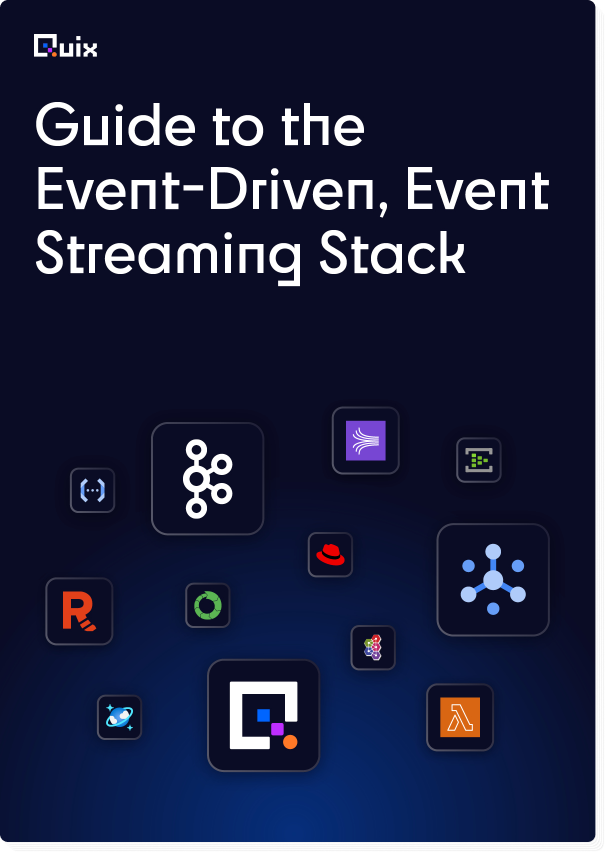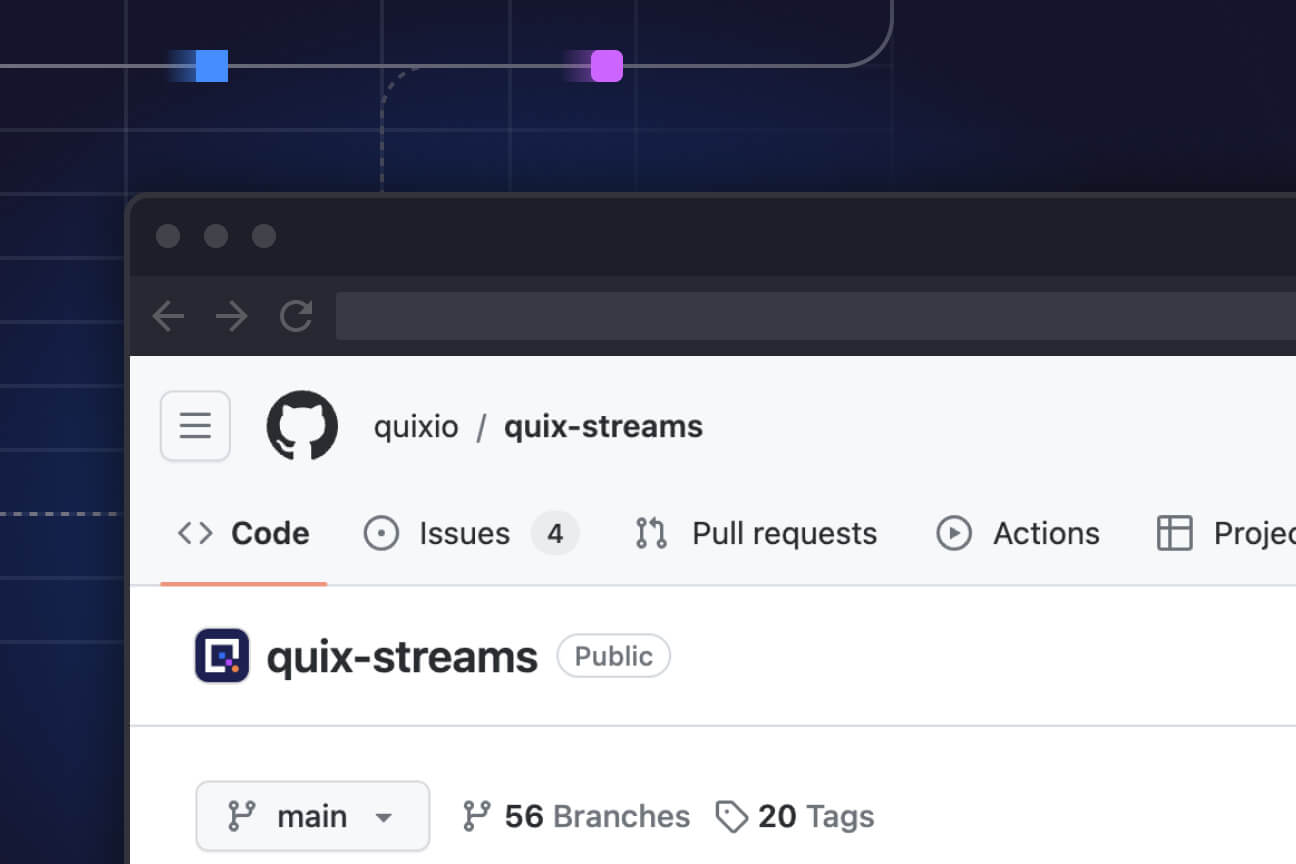Three ways customer-centric companies are using real-time data
Companies that shift from batch data to stream processing are making big gains in speed, responsiveness and product development.

How real-time stream processing enables customer-centric, data-driven growth
When is a gift not a gift? A good data team with the right tools can engage customers with data-driven, customer-centric products and experiences. But companies that lack efficient data management tools and processes waste valuable time drowning in too much information.
Because customers require more personalized experiences and products tailored to them, efficient tools that help you use data in real time are a critical business priority.
McKinsey & Company recently identified data management, making decisions and real-time performance measurement as three of the five technologies needed to power customer-centric, data-driven growth.

Image source: McKinsey & Company, “Five technology building blocks to power customer-centric, data-driven growth,” October 2021
At the top of the list of challenges, according to McKinsey, are an organization’s ability to access customer data; and the demand to build engines that make decisions about how to process it. These are the next big problems that companies must solve to become both data-driven and customer centric.
Moving from batch processing to stream processing, also known as in-memory or real-time processing, is part of the solution.
“Moving from batch processing to stream processing, also known as in-memory or real-time processing, is part of the solution.”
Batch vs. stream processing
Siloed data systems that collect, store and process data in batches slow down data scientists and engineers who want to quickly access and operationalize data across their organization. Batch processing is particularly challenging when reducing latency and delivering powerful computing in real time. The back-and-forth between systems leaves companies one step behind their customers at every turn.
Stream processing overcomes these challenges by cutting out the back-and-forth and processing data as it flows into a system. Companies that use stream processing with their existing batch-processing systems deliver timely, relevant experiences. That means their products stay personalized to each individual at every moment.
Three ways that stream processing enables companies to be more customer-centric
1. Speed: when seconds matter, streaming data delivers the speed your customers need
“Fast adaptation is everything when it comes to being customer centric,” writes Steven Van Belleghem in The five biggest myths about customer centricity. “If the customer changes direction, so should you.”
“Fast adaptation is everything when it comes to being customer centric. If the customer changes direction, so should you.”
Part of delivering things at the right time comes down to speed: being first to market and providing digital products with low latency and fast page loads. Seconds matter when you’re trying to beat the time it takes a customer to lose interest.
Control provides a telemetry system that automatically switches cellular towers for optimal performance as drivers race around the track. It sounds like a small thing, but being just a bit faster can make a big difference if you’re driving a race car. The same goes for manufacturing parts or streamlining an ecommerce experience.
2. Responsiveness: accessing IoT data streams enables real-time feedback loops
Another aspect of speed is responsiveness to current events and changing customer behavior. A digital twin is an advanced digital model that uses real-time data to update the model continuously.
Digital twins can help companies understand and anticipate the needs of anything from a machine on the assembly line to a patient in intensive care. With the ability to process multiple data streams in real time, digital twins can rapidly calculate likely outcomes as the variables change.
The use of a digital twin model to help with ventilation/intubation decisions during the early months of the COVID pandemic offered an incredibly cool example of this method. Project BreathEasy gathered a consortium of experts to build a model using real-time stream processing and artificial intelligence to predict ventilation requirements for individual patients.

Image source: Project BreathEasy: Digital Twins of lungs to improve COVID-19 patients outcomes
This type of real-time feedback loop can pull data from any IoT device or sensor. Companies can use digital twins to provide personalized service appointments for drivers before the check engine light comes on. It’s also helpful for predicting and scheduling maintenance for machinery and targeting ads to runners based on how many miles they log in Strava. The list of exciting possibilities never ends.
3. Product development: real-time data enables customer-driven product development
When you deeply understand your customers, you can create experiences they didn’t even know they wanted or needed. Think of it as gift-giving. It’s great when someone gets you something from your gift list, but getting something that is both unexpected and perfect brings even more joy.
“The key tenet of human-centered design is you don’t develop for a corporate or a role, you develop for a person […] the simplest possible thing is to listen to clients…”
Hari Moorthy, Global Head of Goldman Sachs Transaction Banking | SIBOS Conference 2020
To do that successfully, the giver — in this case, your brand — needs to be observant. Brands do so by accessing and understanding the data that customers share through both their expressed preferences, and their more subtle digital actions.
Netflix uses stream processing to reduce computing needs and latency in its recommendation engine, which delivers hyper-personalized results in real time. The recommendation engine is responsible for more than 80% of all Netflix viewing.
But that’s not all. The streaming video giant also uses real-time data to develop original content. By deeply understanding different audience types — when they watch, what they watch, which actors they prefer — Netflix can tailor original content to resonate with specific audiences.
Using customer data to drive product development might be the epitome of becoming a data-driven, customer-centric company.
Quix makes real-time data accessible and actionable
“Stop worrying about what is streaming, what is batching, all that stuff. Try to get that as automated as possible. […] It’s infeasible to have people worry about streaming and batch, and the interoperability. There has to be a fluid space between them.”
Rajesh Nishtala, Realtime Data Engineer, Facebook
Real-time stream processing is an exciting advance in data management, but the challenge of building the infrastructure for stream processing can block teams and companies from accessing it. That’s where Quix comes in. We empower the customer-obsessed people in your organization to access and use real-time data without building their own stream-processing system.
Find out how Quix can help you access and use customer insights in real time. Sign up for a free account and get started today. If you’d like some support, chat with us in our Slack community.
What’s a Rich Text element?
The rich text element allows you to create and format headings, paragraphs, blockquotes, images, and video all in one place instead of having to add and format them individually. Just double-click and easily create content.
Static and dynamic content editing
A rich text element can be used with static or dynamic content. For static content, just drop it into any page and begin editing. For dynamic content, add a rich text field to any collection and then connect a rich text element to that field in the settings panel. Voila!
How to customize formatting for each rich text
Headings, paragraphs, blockquotes, figures, images, and figure captions can all be styled after a class is added to the rich text element using the "When inside of" nested selector system.

Check out the repo
Our Python client library is open source, and brings DataFrames and the Python ecosystem to stream processing.

Interested in Quix Cloud?
Take a look around and explore the features of our platform.

Interested in Quix Cloud?
Take a look around and explore the features of our platform.







